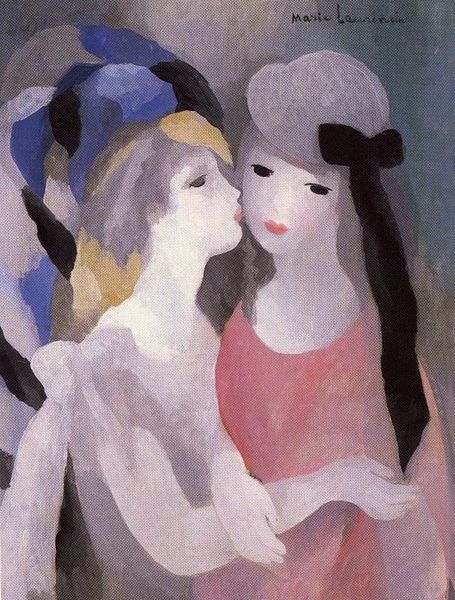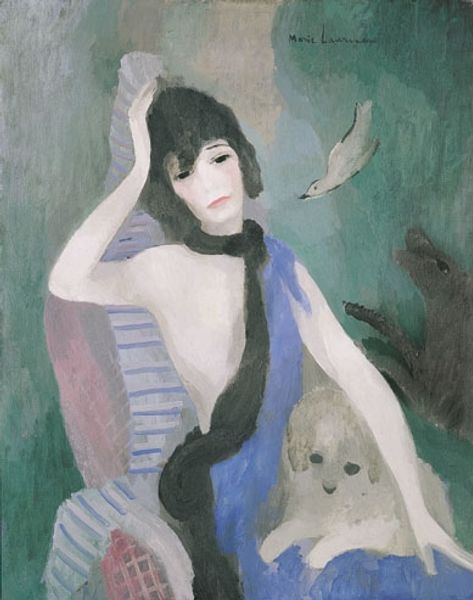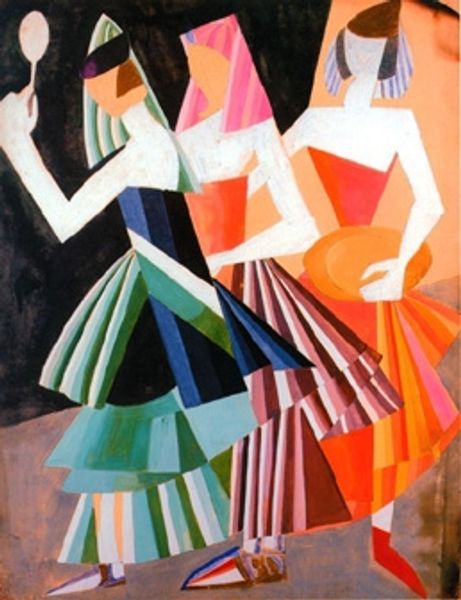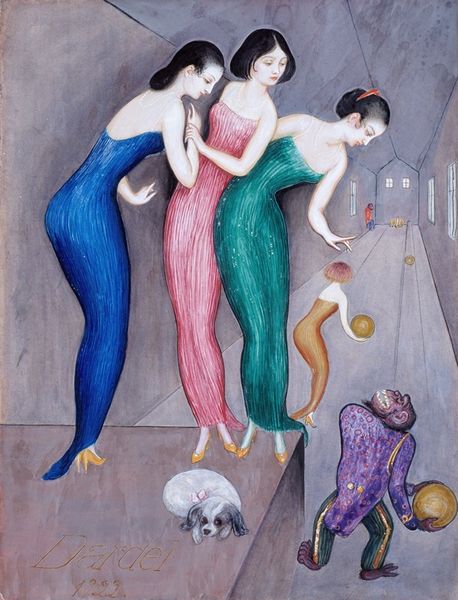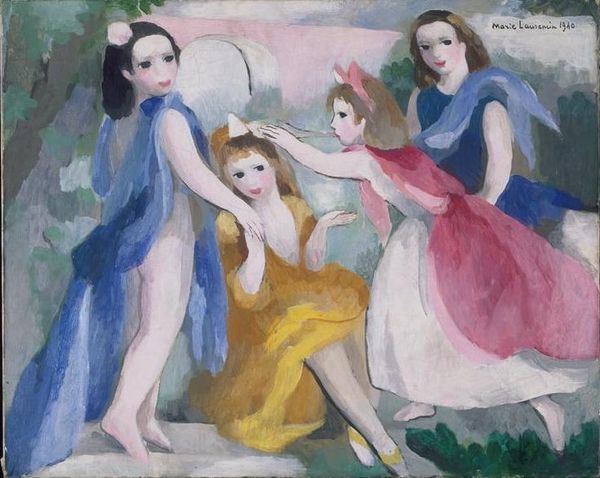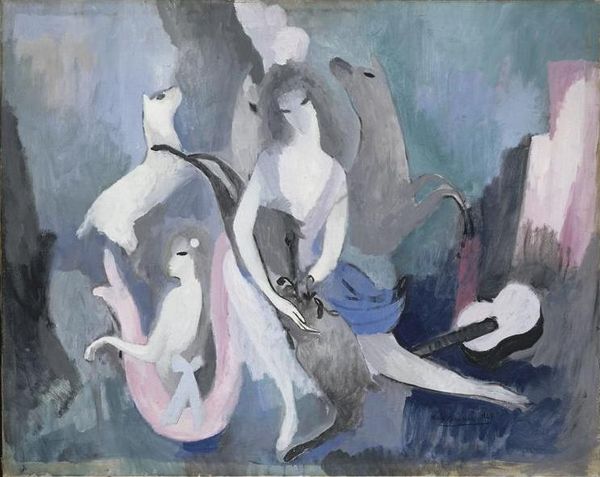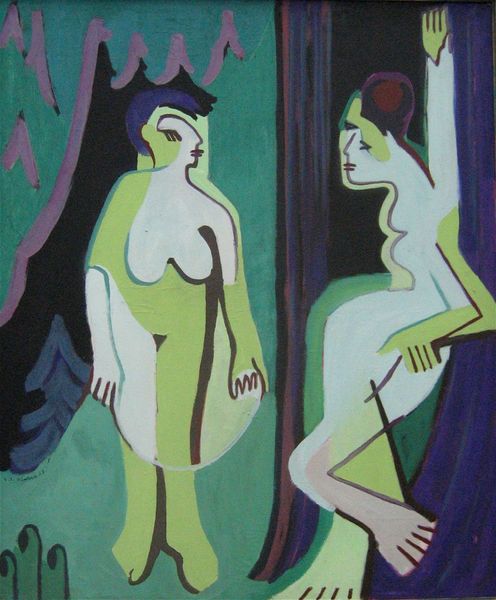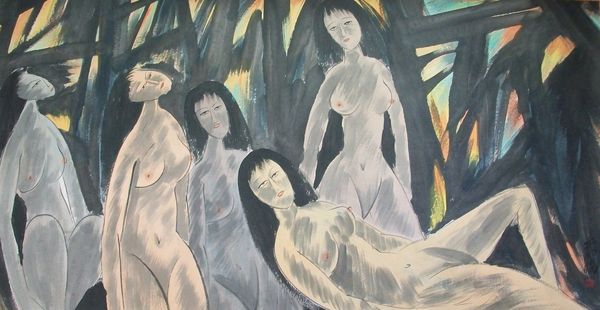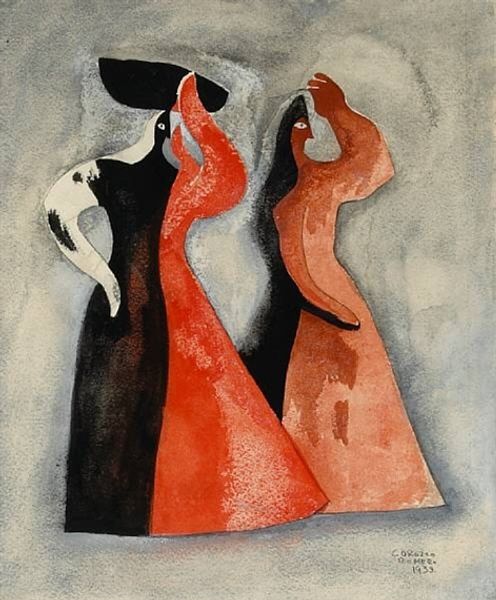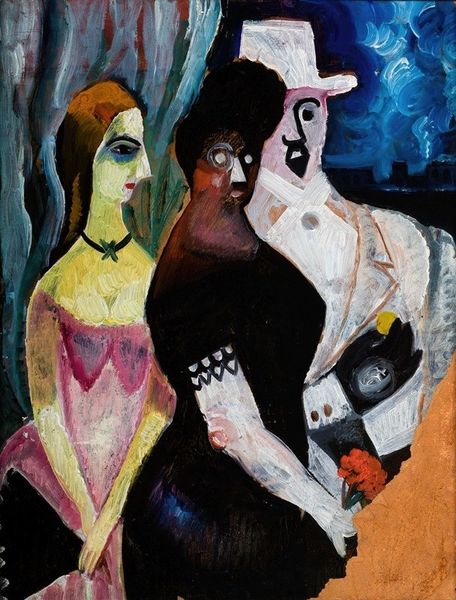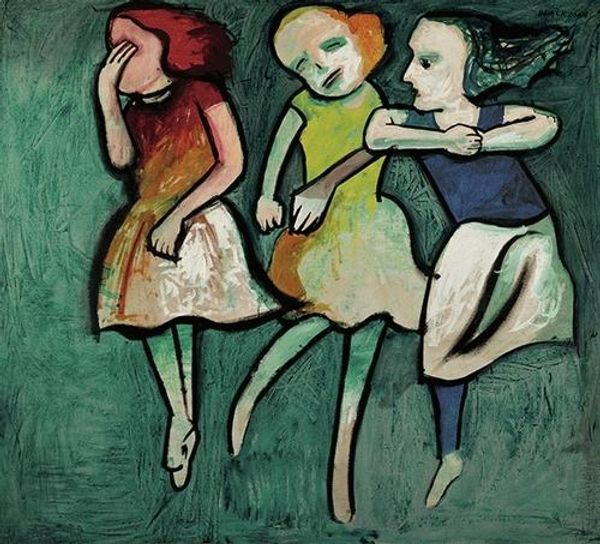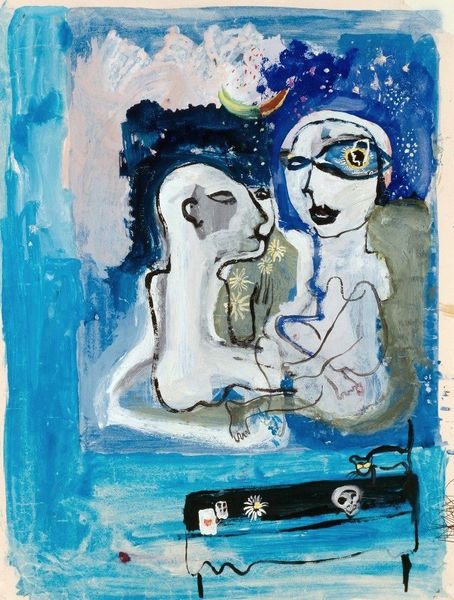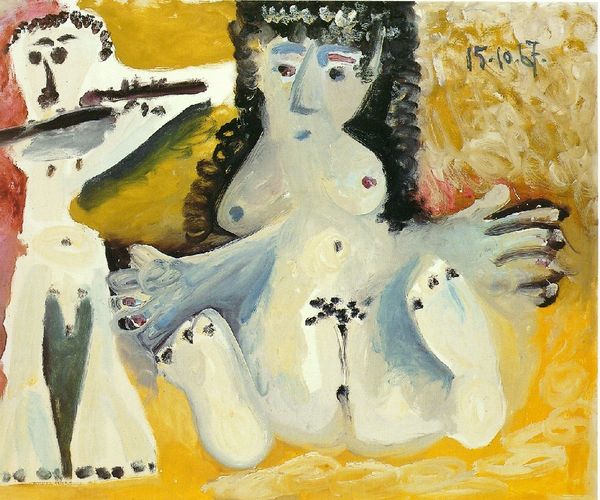
Dimensions: overall: 92.1 x 65.4 cm (36 1/4 x 25 3/4 in.) framed: 115.6 x 88.6 x 8.8 cm (45 1/2 x 34 7/8 x 3 7/16 in.)
Copyright: National Gallery of Art: CC0 1.0
Curator: This is Marie Laurencin’s “In the Park,” painted in 1924 using oil paints. Editor: It has a very dreamlike, ethereal quality. The pale colors and hazy outlines create a sense of quiet and reverie. Curator: Laurencin was part of the Parisian avant-garde. This painting reflects her focus on representing female figures, often within leisurely settings. Notice how she frequently depicts women in soft, pastel shades. I wonder what this emphasis on femininity suggests? Editor: It is clearly more than just aesthetics. Look at the production of beauty, especially in the roaring twenties, when new manufacturing methods were developed for perfumes, make-up, hair products, clothes, shoes... Laurencin participated in that economy through portrait commissions for wealthy patrons. The artwork subtly encodes the cultural capital it generates. Curator: Yes, and if we consider the composition itself, the way Laurencin simplifies the forms almost borders on the abstract. The flattened perspective and muted tones remove any sense of depth. Editor: Although some would argue this limits a three-dimensional understanding of the form, the ambiguity actually invites the viewer in and allows us to project feelings onto these elegant characters. Take for instance their melancholic mood conveyed through averted gazes. Is that the reality or their aesthetic construction for an art market of male desires? Curator: That is a point, I’m especially drawn to the rendering of the fabrics: delicate tulle, silk and veils. The oil paint lends itself well to capture their fluidity and lightness. Editor: And notice the material relationships created by this style and medium: between skin, fabric, hair. Her color palettes feel distinctly her own: gray, pale pink, soft blue, all mixed to construct her visual signature in a world in flux. Curator: Indeed, seeing how Laurencin constructs her work and considers the world outside allows for an expanded reading of female roles in the 1920s. Editor: Ultimately, "In the Park" beautifully shows how the artwork's formal elements carry meaning.
Comments
No comments
Be the first to comment and join the conversation on the ultimate creative platform.
